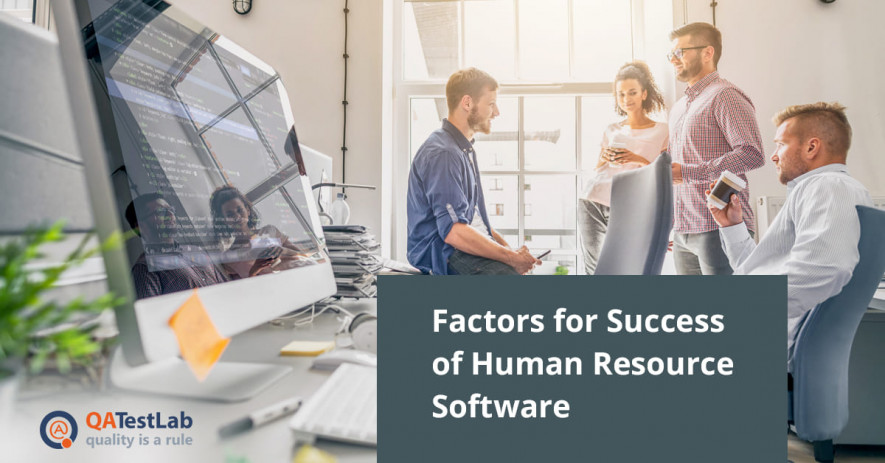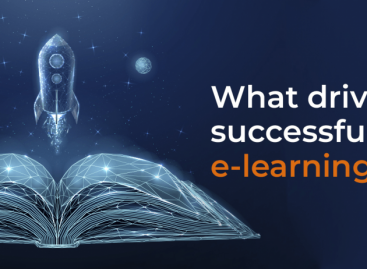- QATestLab Blog >
- QA for Business >
- Industries Insights >
- What Makes Recruitment Software More Powerful?
What Makes Recruitment Software More Powerful?

In recent years, the market of Human Resource Software has been advancing at an exponential pace. It is an effective way to organize the search for candidates and reduce the time to perform routine tasks. However, a lot of Recruitment Software still struggles to deliver its designed capabilities. What prevents this type of software from being more robust and competitive on the market? In this article, we tried to find a reason.
What is the Purpose of HR and Recruiting Software?
A clear understanding of the purpose and ultimate value of recruitment software is the paramount key to developing software that hires well. For talent acquisition systems (ATS) or human resources management (HRM) software, this purpose is narrowly focused – to facilitate recruitment processes. For achieving this goal, the software can be composed of a variety of techniques that automate manual tasks.
From posting job positions, and reviewing hundreds of applications and CVs to sending offer letters, previously recruiters had to do much paperwork. Recruitment software, in turn, transforms old mechanisms of the search for needed specialists. Bringing all requirement tasks into one place, they leave staffing agencies to perform only those tasks, which requires human factors. All this saves time tremendously.
Functions Recruitment Software Should Perform
Recruiter software is an end-to-end hiring solution that should perform the following tasks:
- Sourcing. This is the initial stage of amassing information about candidates, comparing data from various profiles with the requirements, examining databases, and finding candidates who are not actively looking for a job but could potentially be interested.
- Engagement. The next stage is aimed at communication with a potential candidate. Recruitment software makes this communication fast, convenient, and easily manageable (given the possibility of communicating with many candidates simultaneously and sending message templates, etc.).
- Selection. The third stage focuses on selecting candidates according to their skills and job positions available within a company. If there are many applicants, and the recruiter is physically unable to view all the profiles, the software can utilize solutions powered by artificial intelligence to identify the right candidate more quickly.
- Hiring. The final stage helps the recruiter to customize and optimize the process of onboarding. To undertake this task, recruitment software should automatically maintain historical records for applicants, provide special functions for automatically sending an offer, and more.
What is Artificial Intelligence (AI) for HR technology?
Since we live in progressive times of cutting-edge technologies, it is impossible to develop competitive recruitment software without Artificial Intelligence (AI). Like for any other software, AI intelligently automates the manual tasks allowing us to do more with less. Thanks to machine learning algorithms, recruitment software can learn from past behavior and perform time-consuming, repetitive tasks such as screening resumes or scheduling interviews with candidates.
How to power HR Solution with AI?
There are several ways to use Artificial Intelligence for recruitment software. All of them are based on training machine learning algorithms, which is a solid base of AI. For this, you need to define what repetitive cases you plan to automate. Then, it is necessary to collect data on these cases and let ML-algorithms learn from them. The more data you provide, the more accurate results you will get. For instance, for accurate screening resumes, you need to analyze and extract insights from thousands of resumes for a specific role.
Another approach to involve AI in HR software is integrating chatbots into hiring processes. Just like in the previous case, for this, you need to find the most used scenarios and make the chatbot act according to it to provide real-time interaction to candidates. Apart from this, Recruitment automation with AI allows facilitating the performance of other tasks like posting job ads, candidate scoring and evaluation, and more. Besides, you can set AI-based recommendations systems, etc.
Why Recruitment Software Testing Matters?
Given a large selection of recruitment software on the market, recruiters will probably choose those that work flawlessly and have no bugs. What are the bugs in the recruitment software? These would be even the most primitive errors with registration, bad performance, delays in sending offers, and more. One more negative case is when software works fine on one device but shows different scenarios on another. To prevent these and other mistakes in HR solutions, it is recommended to conduct these types of testing:
- Functional Testing – to check the system for compliance with functional requirements / specifications;
- Regression Testing – to confirm that a recent program or code change has not adversely affected existing features;
- UX / Usability Testing – to check whether recruitment solution is user-friendly;
- Compatibility Testing – to verify whether HR solution works properly in different environments;
- Performance and Load Testing – to verify performance and load capacities of software;
- Security Testing – to provide black box penetration testing using OWASP methodology.
Neglecting software testing for recruitment projects, you risk to face bugs that will be too expensive to be fixed later after production.
Conclusion
To push recruitment software to the market may be a risky endeavor. But keeping in mind several factors, you have more chances to beat your competitors on the market and win customers’ hearts. These factors are: 1) Involving Artificial Intelligence to form recommendation systems, automating manual tasks, integrating chatbots for regular replies; 2) to care about recruitment software testing, and check it before release to avoid all possible bugs.
Learn more from QATestLab
Related Posts:
- Applicant Tracking Systems: review by HR specialist
- TOP Mistakes in HR Software that can Damage Business Reputation
- 5 Tips to Increase Efficiency of Software Testing
About Article Author
view more articles
has more than 2-year experience in blogging and copywriting, copyediting and proofreading of web content.
View More Articles







No Comments Yet!
You can be the one to start a conversation.